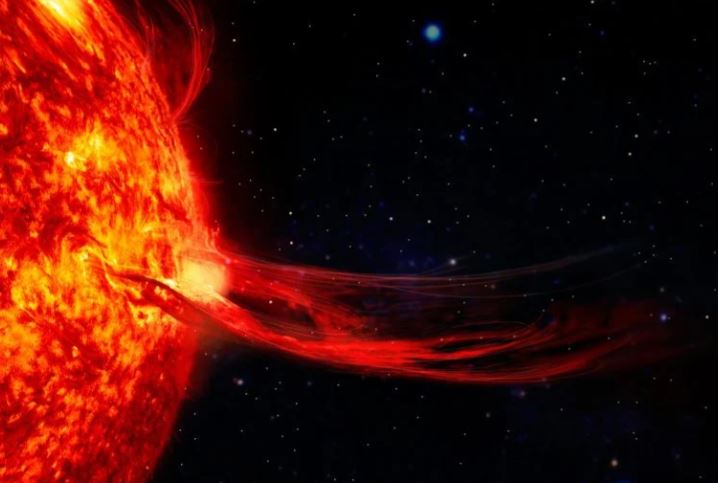
Thanks to NASA's Parker Solar Probe, scientists have finally seen how the Sun breaks apart and explodes. The mission has confirmed a 70-year-old theory about the magnetic forces behind solar storms. Source: Shutterstock
The breakthrough explains how the Sun unleashes huge bursts of energy that create solar storms and hurricanes powerful enough to disrupt satellites, power grids and communications on Earth.
Confirming decades-old theories about the Sun
A team led by the Southwest Research Institute (SwRI) has provided the first direct evidence confirming long-standing theories of magnetic reconnection, a powerful process that releases stored magnetic energy and drives solar flares, coronal mass ejections, and other space weather phenomena. The breakthrough was made possible by NASA’s Parker Solar Probe (PSP), the only spacecraft to fly through the Sun’s upper atmosphere.
Magnetic reconnection occurs when magnetic field lines within superheated plasma break apart and then reconnect in a different configuration. This sudden change releases a huge amount of energy. On the Sun, this process causes eruptions that can ripple across the solar system and disrupt technology on Earth, including satellites, communications, and power grids. Developing accurate models of how reconnection works on the Sun is key to predicting these disruptive solar storms before they reach our planet.
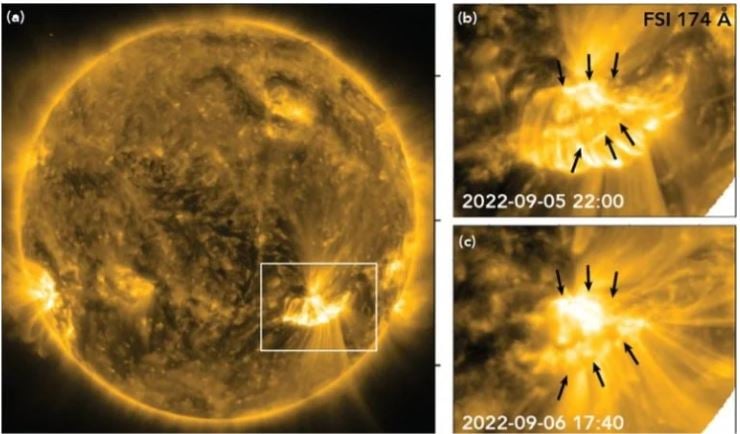
A SwRI-led study of the Sun has confirmed decades-old theoretical models of solar magnetic reconnection. Measurements from NASA’s Parker Solar Probe have helped fill important gaps in data about the processes that drive solar flares, coronal mass ejections, and other space weather phenomena. The measurements were taken from the region depicted in white, which has been identified as the origin of the coronal mass ejection. The figures shown here are from images taken by ESA’s Solar Orbiter mission. Credit: ESA/NASA/Solar Orbiter.
From the Earth's magnetosphere to the Sun
“Reconnection occurs at multiple spatial and temporal scales, in space plasmas ranging from the Sun to Earth’s magnetosphere, from laboratory environments to cosmic scales,” said Dr. Ritesh Patel, a research scientist in the Solar System Science and Exploration Division at SwRI in Boulder, Colorado, and lead author of a new paper published in Nature Astronomy. “Since the late 1990s, we have been able to identify reconnection in the solar corona through imaging and spectroscopy. In situ detection has been possible in Earth’s magnetosphere with the launch of missions such as NASA’s Magnetosphere Multiscale (MMS) mission. However, similar studies in the solar corona only became possible with the launch of NASA’s Parker Solar Probe in 2018.”
PSP’s unprecedented proximity to the Sun has opened the door to discoveries once thought impossible. During a close flyby on September 6, 2022, the spacecraft encountered a massive eruption and collected the first detailed images and measurements of plasma and magnetic field activity during such an event. By combining these observations with data from the European Space Agency’s (ESA) Solar Orbiter, the SwRI-led team confirmed that PSP had indeed flown through a magnetic reconnection zone in the Sun’s atmosphere for the first time.
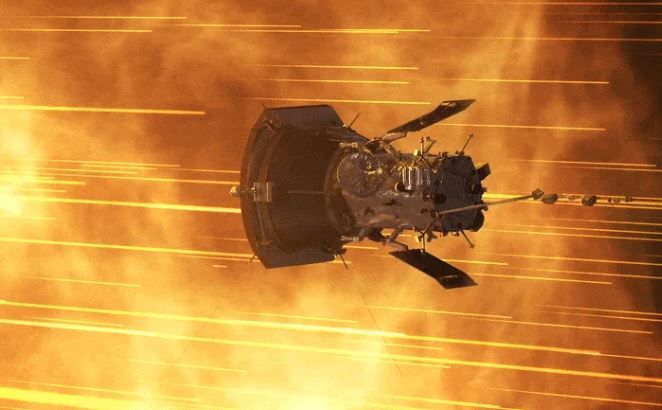
NASA's Parker Solar Probe is the first spacecraft to fly directly through the Sun's outer atmosphere, collecting unprecedented data on solar activity and its effects on Earth. Credit: NASA GSFC/CIL/Brian Monroe
Long-standing models finally confirmed
“We have been developing magnetic reconnection theory for nearly 70 years, so we have a basic idea of how the different parameters will behave,” Patel said. “The measurements and observations from the encounter validated decades of numerical simulations within a certain degree of uncertainty. The data will serve as strong constraints for future models and provide a pathway to understanding PSP solar measurements from other timescales and events.”
NASA’s MMS mission, led by SwRI, has given researchers an idea of how reconnection occurs in the near-Earth environment on a smaller scale. The 2022 PSP observations now provide researchers with the missing piece of the puzzle connecting Earth-scale reconnection to the solar scale. Next, SwRI will work to determine whether reconnection mechanisms associated with disturbances or fluctuations and magnetic waves are present in the solar regions identified by PSP as experiencing active reconnection.
Unlocking the Secret of Energy Transmission
“Ongoing research is making discoveries at multiple scales that allow us to see how energy is transferred and how particles are accelerated,” Patel said. “Understanding these processes in the Sun can help us better predict solar activity and improve our understanding of the near-Earth environment.”
The Parker Solar Probe is a NASA mission designed to study the Sun up close and explore how its activity shapes Earth's environment. It is part of NASA's Living with Stars program, which focuses on the Sun-Earth system and its impact on everyday life and society. The program is managed by NASA's Goddard Space Flight Center in Maryland for the agency's Science Mission Directorate in Washington. The spacecraft itself was designed and built by the Johns Hopkins University Applied Physics Laboratory, which also operates and manages the mission.
Source: https://doanhnghiepvn.vn/cong-nghe/tau-tham-do-mat-troi-parker-giai-ma-bi-an-keo-dai-70-nam-ve-hoat-dong-cua-mat-troi/20250824073432046








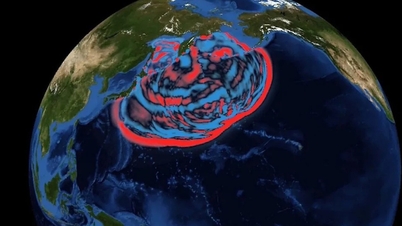

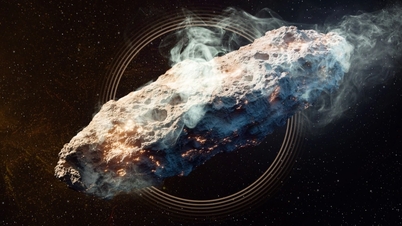

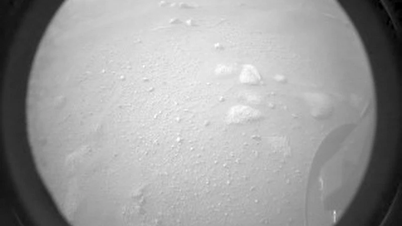


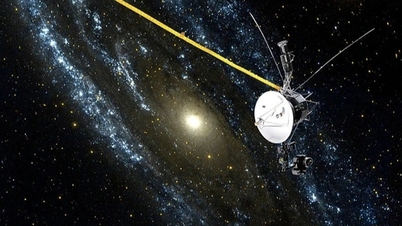






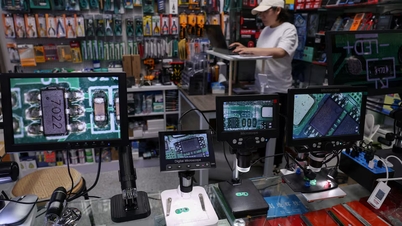


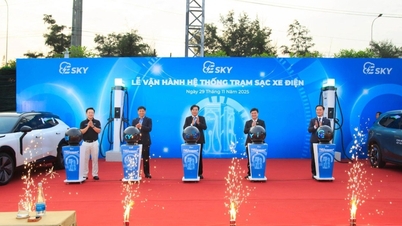










![[Photo] Worshiping the Tuyet Son statue - a nearly 400-year-old treasure at Keo Pagoda](/_next/image?url=https%3A%2F%2Fvphoto.vietnam.vn%2Fthumb%2F1200x675%2Fvietnam%2Fresource%2FIMAGE%2F2025%2F12%2F02%2F1764679323086_ndo_br_tempimageomw0hi-4884-jpg.webp&w=3840&q=75)
![[Photo] Parade to celebrate the 50th anniversary of Laos' National Day](/_next/image?url=https%3A%2F%2Fvphoto.vietnam.vn%2Fthumb%2F1200x675%2Fvietnam%2Fresource%2FIMAGE%2F2025%2F12%2F02%2F1764691918289_ndo_br_0-jpg.webp&w=3840&q=75)











































































Comment (0)